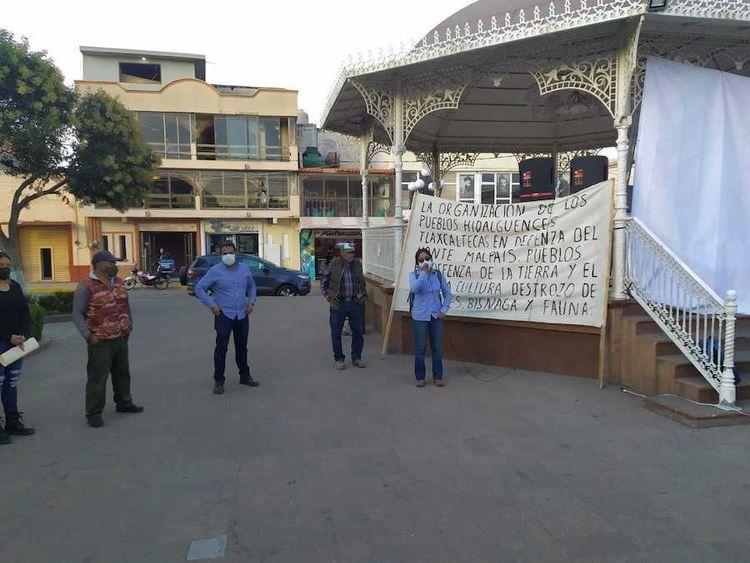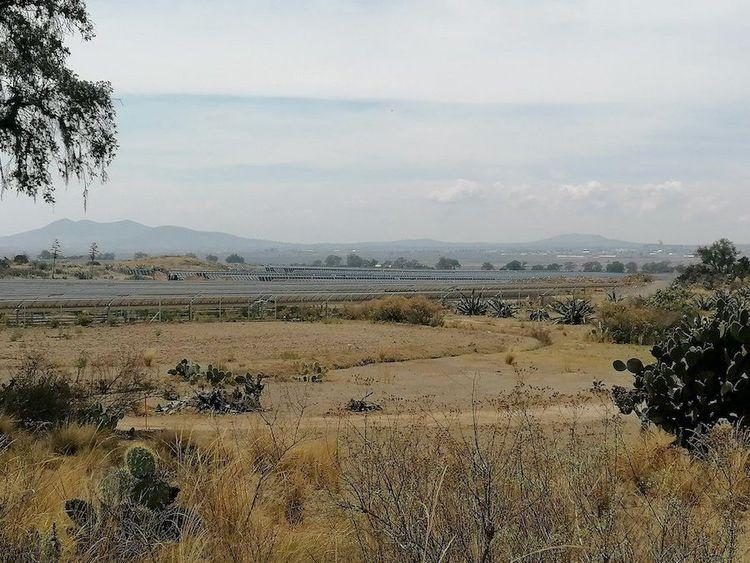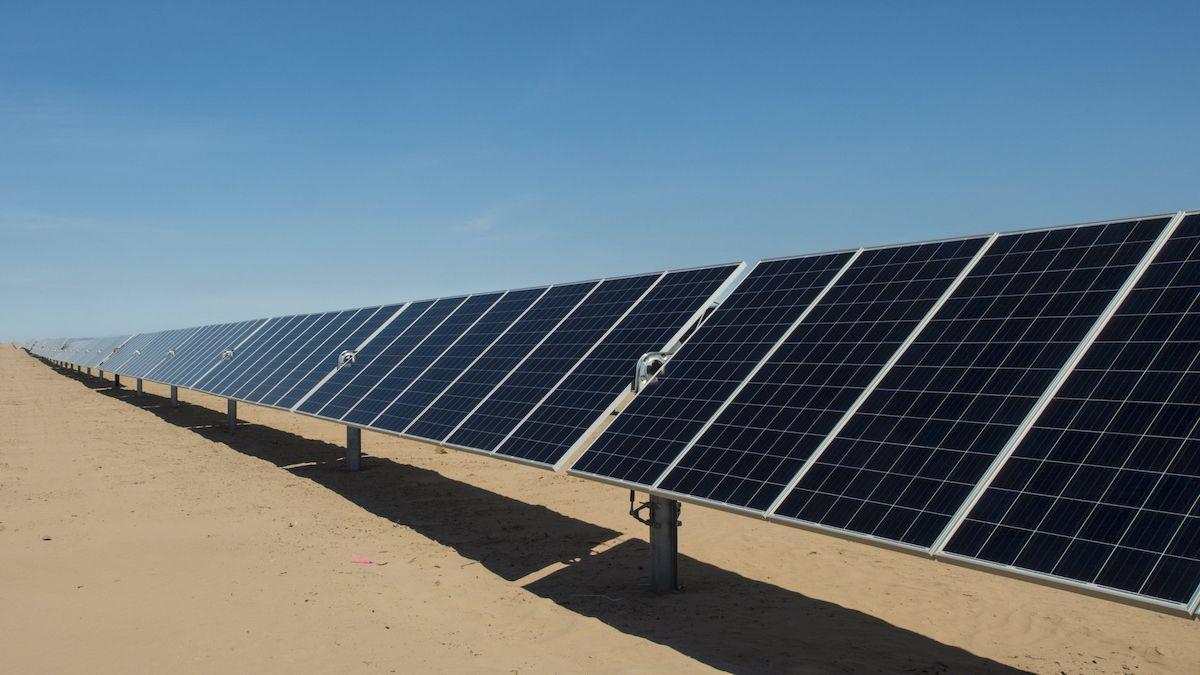After a pause due to the pandemic, residents of Calpulalpan, Tlaxcala, have reorganized themselves in the last year under the name of Colectivo 16 de Octubre, a movement in opposition to the Nueva Xcala solar park whose mitigation measures, they say, are insufficient to remedy the environmental and social damage caused by its construction and installation.
The Nueva Xcala project began in 2016, promoted by the French company Engie, and is located on the borders of the states of Hidalgo and Tlaxcala. It has not yet entered into operations, but it is already under construction.
It consists of the operation of a photovoltaic plant that will generate 486,313 gigawatt hours (GWh) annually, with a validity of 35 years.
Although the company has an Environmental Impact Statement (MIA) approved by the Secretariat of Environment and Natural Resources (Semarnat), engineers from Chapingo University have also reported on impacts such as water scarcity in relation to the loss of flora and fauna in the region.
“We talk about a sustainability and development project, but it contrasts with what they are doing... They cut 750,000 magueyes to settle in and those who are planting are not going to happen because they do it left and right. There are no experts who say, for example, how many meters each maguey has to be. Opinions that are basic to reforest,” says Iván Macías, a member of the October 16 Collective, in an interview.
Regarding the felling of magueyes, the company Engie has indicated that this is their agave rescue and relocation program, with which they had the environmental requirement to protect a minimum of around 38,000 plants of the species, but they reached 51,000.

Rally in Calpulalpan. Photo: October 16 Collective.
“Each and every one of the applicable laws and regulations regarding land use, environmental protection, cultural heritage and human rights has been respected,” Engie responded to the Business and Human Rights Information Center in June 2020, after it collected testimonies and articles from residents, ejidatarios and specialists on the impacts of the project.
However, the October 16 Collective insists that it is necessary to continue reporting on the potential imbalances that the plant would cause.
“First of all, it is informing, people need to know in order to appropriate this space,” said Iván Macías, who describes that some of the inhabitants believe that the project will bring greater employment and development opportunities to the region, despite the fact that there are already two other solar parks operating in the area, called Magdalena I and Magdalena II.
Regarding the impacts, it has been documented that the installation of photovoltaic parks requires remodeling of the soil and vegetation cover. This affects agricultural land and grazing areas, as well as growing and supply regions.
To the north of the project estate, there is also an area of oak forest, however the company's MIA did not detail the hydrological effects that removing it would have to be removed.
“The importance of preventing oak populations from being removed from the area involved in the Nueva Xcala project is that these populations constitute ecosystems that perform multiple functions, while providing environmental services such as climate regulation and water regulation,” explains the report prepared by engineers from the University of Chapingo.
Another aspect that has been left out of the MIA, according to specialists, is the conservation of sotol. A plant species used for medicinal and edible purposes that is classified as threatened in the Official Mexican Standard (NOM-059-SEMARNAT2010).
Relocating these species is also a concern because they will be transferred to land that corresponds to private property, parcelled areas that are currently rented property by the developer company. For the Collective, this does not guarantee that vegetation will continue to be preserved once the project is completed.
“Adding to this, one of the most serious complications is the lack of rain because, in practical terms, these broad-leaved trees transpire and generate important physical barriers to cloud formation, without them we would have a problem, mainly for a municipality dedicated to the countryside,” explained engineer Rodolfo Torres at the time.

Malpais mountain area, Calpulalpan, for the installation of the Nueva Xcala project. Photo: October 16 Collective.
Pending answers
In Mexico, the commitment to clean energy has allowed the development of 63 wind farms and 62 solar parks. According to the Energy Regulatory Commission, the solar industry has the most projects ready for construction, with 194.
However, despite the fact that they are the generation of non-fossil energies, the modus operandi of these projects has sown concerns and mobilizations throughout the country. As has been the case with complaints from communities on the Isthmus of Tehuantepec in Oaxaca and on the Yucatan Peninsula.
Conflicts that are attributed, according to the October 16 Collective, to partial compliance with environmental laws in order to develop megaprojects.
“You can't name clean energy when you are deforesting a forest that is providing us with water, that is giving us oxygen... It's illogical for a forest that is intended for recreation and cultivation to be stolen by a company from another country,” said Daniel Robles, also a member of the Collective.
Regarding the intervention of the authorities, so far there has been only a rapprochement with the former municipal president of Calpulalpan, Neptali Moisés Gutiérrez Juárez, but the answer was negative.
While with Edgar Peña Nájera, the current municipal president, there has been a reception and delivery of a letter stating the problem, but there has been no response since February of this year, as they explain.
The same has happened with the Government Secretariat of the State of Tlaxcala.
“We are clear that there are damages that are already irreparable, but there is no ethical commitment or responsibilities that representatives are taking to remedy it,” Robles added.



Comentarios (0)